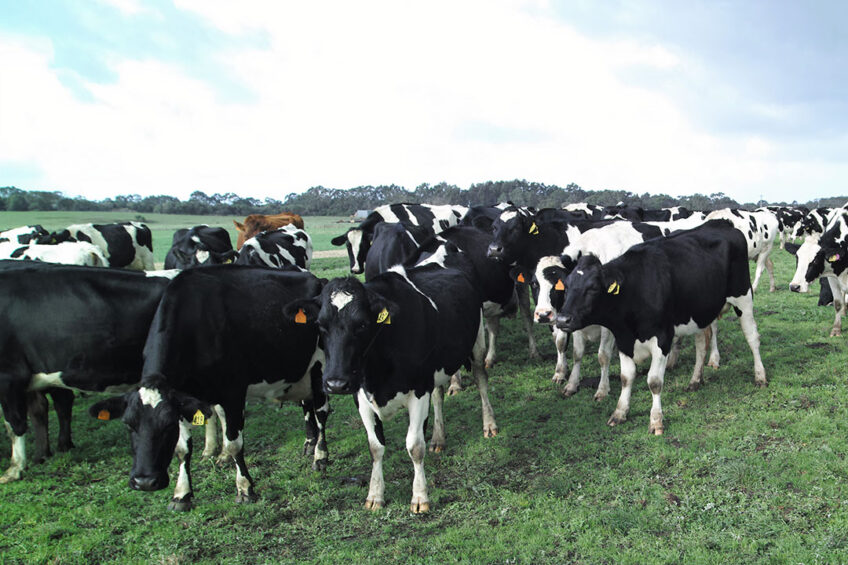Past the Fundamentals: Advanced Techniques for Breeding and Taking Care Of Constance Cattle
Past the Fundamentals: Advanced Techniques for Breeding and Taking Care Of Constance Cattle
Blog Article
Master the Art of Cooking With Turf Fed Meat
In the world of cooking competence, understanding the art of food preparation with grass-fed meat holds a prominent placement. The distinct high quality of grass-fed meat offers a myriad of benefits that not just boost the taste of recipes yet also add to a healthier way of living. From the tender structure to the durable taste profile, grass-fed meat provides a canvas for culinary creativity. As we discover the nuances of this premium meat option, uncovering the ideal food preparation approaches, flavor pairings, and storage space techniques, a globe of gastronomic opportunities unfolds. Whether you are an aspiring home or a skilled chef cook, diving right into the realm of grass-fed meat guarantees a journey loaded with delectable experiences and culinary discoveries.
Advantages of Grass-Fed Meat

When picking grass-fed meat, consumers can benefit from its higher levels of omega-3 fatty acids and antioxidants contrasted to traditionally elevated meat. Constance Cattle. Omega-3 fats are crucial nutrients that sustain mind health and wellness, decrease inflammation, and promote heart health and wellness. Grass-fed meat is understood to have up to 5 times more omega-3 fats than grain-fed meat, making it a healthier selection for those wanting to raise their intake of these beneficial fats
In enhancement to omega-3 fats, grass-fed meat is also richer in anti-oxidants such as vitamins E and C, in addition to beta-carotene. Anti-oxidants play a critical function in protecting cells from damages triggered by totally free radicals, which can add to various persistent diseases and accelerate aging. By selecting grass-fed meat, customers can not only delight in a more delicious and nutrient-dense healthy protein source yet additionally support their general health and well-being.
Incorporating grass-fed meat into your diet can be a straightforward yet reliable way to enhance your dietary consumption and enjoy the advantages of omega-3 fatty acids and antioxidants that are normally bountiful in this kind of meat.
Ideal Food Preparation Techniques
Making use of ideal food preparation techniques is necessary to maintain the nutrient profile and boost the flavor of grass-fed meat. When cooking grass-fed meat, it is essential to keep in mind that it is leaner than traditionally elevated meat, making it extra vulnerable to drying if overcooked. To make certain a juicy and tasty outcome, think about cooking grass-fed meat at slightly reduced temperature levels than you would with grain-fed meat.
Cooking is a preferred method for cooking grass-fed meat as it enables excess fat to drip away, avoiding flare-ups that can create charring. One more great food preparation method for grass-fed meat is pan-searing.
Sluggish cooking techniques such as braising or cooking are also excellent choices for harder cuts of grass-fed meat, as they aid damage down the muscle mass fibers and soften the meat. Whichever food preparation approach you choose, bear in mind to allow grass-fed meat remainder after cooking to allow the juices to redistribute, ensuring a wet and tender final dish.
Flavor Pairings and Seasonings
To enhance the all-natural tastes of grass-fed meat, critical flavor pairings and spices play an essential function in raising the overall dining experience. Grass-fed meat has a rich, distinct taste that can be matched and boosted by meticulously chosen components.
Along with herbs, seasonings such as black pepper, garlic, and smoked paprika can further elevate the taste profile of grass-fed meat meals. These flavors provide an equilibrium of heat, sweet taste, and smokiness that can enhance the total eating experience. When seasoning grass-fed meat, it is vital to make use of premium salt, like sea salt or Himalayan salt, to highlight the meat's tastes without adding unneeded chemicals or ingredients.
Storage Space and Managing Tips
Correct storage space and handling practices are necessary for keeping the quality and freshness of grass-fed meat. When saving grass-fed meat, it is essential to maintain it cooled at temperatures listed below 40 ° F(4 ° C) to stop microbial growth and perishing. To extend the meat's shelf life, think about covering it firmly in parchment paper or butcher paper before placing it in an airtight container or secured plastic bag - Constance Cattle. Prevent keeping grass-fed meat near sites strong-smelling foods as it can take in smells conveniently.
When managing grass-fed meat, it is crucial to practice good hygiene to avoid cross-contamination. Laundry your hands extensively before and after dealing with the meat, and make my website certain that all utensils and surface areas that enter into call with the meat are cleaned up and disinfected correctly. In addition, utilize different reducing boards for meat and veggies to stay clear of microbial transfer.

Top Grass-Fed Meat Recipes
When considering the finest methods to relish the high quality and quality of grass-fed meat, checking out superior recipes can boost your cooking experience. Grass-fed meat's rich flavor and leaner account offer themselves well to a variety of dishes that highlight the all-natural benefits of the meat. One top recipe to attempt is a timeless Grilled Grass-Fed Ribeye Steak skilled with basic active ingredients like salt, pepper, and a touch of garlic for a durable flavor. For a comforting meal, a Slow Cooked Grass-Fed Beef Stew with root veggies and aromatic herbs is a hearty choice that highlights the meat's tenderness.
If you remain in the mood for something lighter, a Grilled Grass-Fed Hamburger offered with fresh toppings and a side of sweet potato fries is a delicious selection. Furthermore, a Herb-Crusted Grass-Fed Lamb ribs roasted to perfection with an assortment of herbs and breadcrumbs is a show-stopping meal for unique occasions. These leading grass-fed meat recipes display the flexibility and superior high quality of grass-fed meat, allowing you to enjoy its remarkable taste in numerous culinary productions.

Final Thought
Finally, understanding the art of cooking with grass-fed meat uses countless benefits, including boosted nutritional value and superior flavor. By utilizing the ideal cooking approaches, explore flavor pairings and seasonings, and following correct storage and taking care of ideas, you can develop tasty and nutritious recipes. Try some top grass-fed meat recipes to boost your culinary skills and take pleasure in the complete potential of this high-grade ingredient.
When cooking grass-fed meat, it is essential to bear in mind that it is leaner than special info conventionally increased meat, making it much more susceptible to drying out if overcooked. To guarantee a juicy and savory result, take into consideration cooking grass-fed meat at slightly reduced temperature levels than you would certainly with grain-fed meat.
When seasoning grass-fed meat, it is essential to use high-grade salt, like sea salt or Himalayan salt, to bring out the meat's flavors without including unnecessary chemicals or ingredients.
Grass-fed meat's rich flavor and leaner profile provide themselves well to a variety of meals that highlight the all-natural benefits of the meat. These top grass-fed meat recipes display the convenience and premium high quality of grass-fed meat, enabling you to enjoy its superior preference in various cooking developments.
Report this page